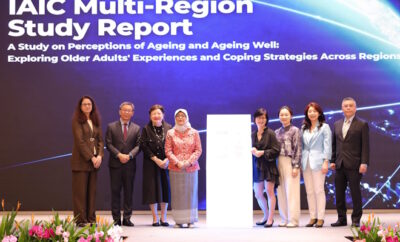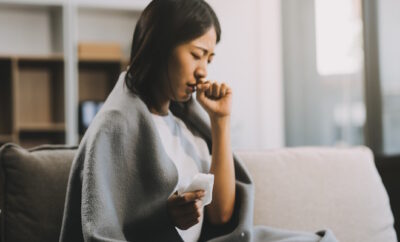
Health x Wellness
Why Mobility Matters for Ageing Well in Singapore
The proportion of Singapore’s population aged 65 years and above is rising, and at an increasing pace.
By 2030, one in four Singaporeans will fall into this cohort.
As Singapore faces a rapid ageing population, it is increasingly important to understand how caregivers, family members and the community can support seniors in their mobility to maintain independence and overall well-being.

Why Mobility Matters
Regaining or maintaining mobility is about much more than physical health. It’s about being able to go to the market, meet friends, or simply move around the house safely. For many seniors, these small freedoms are deeply meaningful. When mobility is lost, it can lead to isolation, loss of confidence, and a decline in overall well-being.
Mobility loss can happen suddenly, such as due to acute onset of illnesses or medical conditions, or it can develop gradually over time. Often, many seniors experience a slow decline due to reduced activity, social withdrawal, or chronic health conditions.
Another major contributor to mobility loss is falls. The fear of falling again after an incident can lead to even less movement, creating a cycle that is hard to break. Extended hospital stays or bed rest can also make it harder for older adults to regain their previous level of function.
Chronic medical conditions like arthritis or gout may also contribute to mobility loss as people tend to worry that movement will make things worse. In reality, gentle, regular activity is often the key to maintaining or regaining strength and confidence.
Preventing and Slowing Down Mobility Loss
Regular movement is one of the best ways to maintain mobility. Cultivating simple habits, like daily walks, light stretching, or joining group activities, can help to keep both the body and mind active.
Social connection is just as important as physical exercise. Seniors can consider engaging in a range of activities offered at Active Ageing Centres (AAC) located within their neighbourhood.
These include physical exercise programmes and opportunities for social connection through group workouts, recreational activities, and peer support.
However, there are also risk factors to be aware of, such as sedentary lifestyle, poor nutrition, fear of falling, depression, and hazards at home such as clutter or poor lighting. Addressing these early can make a significant difference.

Supporting Seniors at Home
When working with seniors, it is crucial to understand their current abilities, goals, and living environment. Exercise plans are then tailored to each individual, focusing on what matters most to them—whether that’s walking to the nearby coffee shop or playing with grandchildren.
In addition, involving caregivers and family members in the process is often key to success, especially when there are cognitive or emotional challenges.
Motivation is most effective when therapy is linked to personal goals. Celebrating small milestones and keeping the atmosphere positive can help maintain engagement. Scheduling sessions at times when the senior feels most comfortable, and having a familiar face present, can also make a big difference.
Creating a Safe and Supportive Environment
A safe home environment is essential for mobility. Clear walkways, sturdy handrails, non-slip mats, and good lighting all help reduce the risk of falls. Simple changes—like using chairs with armrests or ensuring shoes have good grip—can support safe movement.
Simple Exercises for Everyday Life
These are some recommended exercises that seniors can do on a day-to-day basis:
- Sit-to-Stand: Strengthens the legs and helps with standing up from chairs.
- Heel Raises: Improves ankle strength and balance.
- Marching in Place: Supports hip strength and coordination.
These can be done at home, with or without support, and can be adapted to each person’s ability.
A Final Thought
Mobility is a cornerstone of independence and quality of life. Even small, consistent steps—like a daily walk or a few simple exercises—can make a big difference. It’s never too late to start, and support is always available for those who need it. By staying active and connected, seniors can continue to lead fulfilling, independent lives as they age.
Article contributed by Jessica Yu.
Jessica is a physiotherapist at AWWA, providing holistic physiotherapy services in the comfort of clients’ homes across Singapore, with a focus on rehabilitation, mobility, and functional independence. Her client populations include, but are not limited to, geriatric, neurology, orthopaedic, deconditioning, and frailty cases.
Pictures credit to AWWA.





